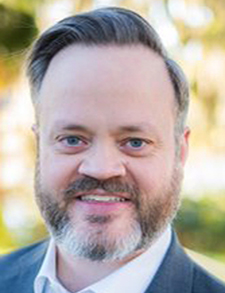Few topics echo in the doctors’ lounge across the country more often than physician burnout. It’s the hot topic of our time. In this talk, the presenters did an excellent job exploring this issue and using small groups in creative and effective ways. We started in our small groups brainstorming what factors define physician burnout. Group leaders came up with the following: workload (including patients and technological interruptions such as secure chats and pages), lack of flexibility or control, lack of autonomy, and misalignment of goals between hospitalists and leadership, as well as other issues.
Dr. Taghvaei, a hospitalist at Denver Health and an assistant professor in the division of internal medicine at the University of Colorado School of Medicine, both in Denver, then spoke about burnout, defining it as a “syndrome characterized by emotional exhaustion.” She went on to say this affects physicians at double the rate of other professions with a suicide rate also double the rate of the general population. Factors contributing to burnout include: too many bureaucratic tasks; spending too many hours at work; increased computerization of practice; lack of respect from administrators and colleagues; insufficient compensation; lack of control or autonomy; government regulations; feeling like a cog in a wheel; emphasis on profits over patients; and lack of respect from patients.1
Dr. Taghvaei then discussed ways to measure burnout, specifically the Maslach Burnout Inventory, or MBI. This was developed in 1981 and has become the standard way of measuring burnout in research. Factors involved in this scoring method include emotional exhaustion, depersonalization, and personal achievement. Each question is scored from 0-6, from never to every day in occurrence. For each section, the higher the score, the more burnout one is experiencing, except for the personal achievement section, where a higher score correlates to lower burnout.
Dr. Manjarrez, associate chief of the division of hospital medicine, associate chief of patient safety, and quality officer for UHealth, as well as an assistant professor of clinical medicine, all at the University of Miami’s Miller School of Medicine, then spoke about what the literature states about burnout. For academic hospitalists, protected time away from clinical duties is necessary for burnout prevention. For community hospitalists, second-victim experiences from the COVID-19 pandemic play a large role in those experiencing burnout.
Dr. Manjarrez continued by discussing differences in generations and genders, and how they are affected by burnout. For example, millennials value the culture of the practice above all factors in job satisfaction. Hospitalists in general are now seeking a better work-life balance from their employers. Women experience far greater burnout than men and tend to take more time off. Interestingly, women report using extended leave as having negative impacts on all aspects of life, while men reported it only having a negative impact on their careers. The U.S. is lagging behind European countries in maternity- and paternity-leave models that actually promote the retention of women in the workplace.
We then broke into small groups again and spoke about various drivers of wellness. Next, Dr. Taghvaei spoke about the “R.I.S.E. for Self-Care” model. This involves four steps:
Recharge—What gives you joy outside of work?
Introspect—What can you do to improve the situation?
Seek help—What resources do you need to improve the situation?
Express yourself—Whom can you thank? What are you grateful for?
Dr. Kennedy, chief medical officer and associate professor of medicine at the University of Alabama at Birmingham, then took the stage and spoke on C-suite solutions and how we as leaders need to demonstrate wellness-centered leadership, which calls us to care about people, cultivate relationships, and inspire change. She charged us to model and normalize self-care, such as by intentionally working remotely at times, making time for daily exercise (even if it means missing meetings), and not responding to emails while on vacation. To care about others, you must first care for yourself. To cultivate relationships, she recommended we learn to listen for understanding, focus on connecting, and then help direct others to their passions. Studies show if we focus 20% of our time on activities we find most meaningful, we will have decreased burnout.
We then did a final small-group brainstorming session for well-being solutions. Ideas brought up included paid time off, flexible schedules, decreased administrative burden, decreased technological interruptions, and other concepts.
Dr. Craven
Dr. Craven is vice president of case management, physician advisor, and hospitalist at McLeod Health, in Florence, S.C. He’s also a member of The Hospitalist’s editorial board.
References
- Kane L. Medscape national physician burnout, depression & suicide report 2019. Medscape website. Available at Published January 16, 2019. Accessed June 3, 2024.





